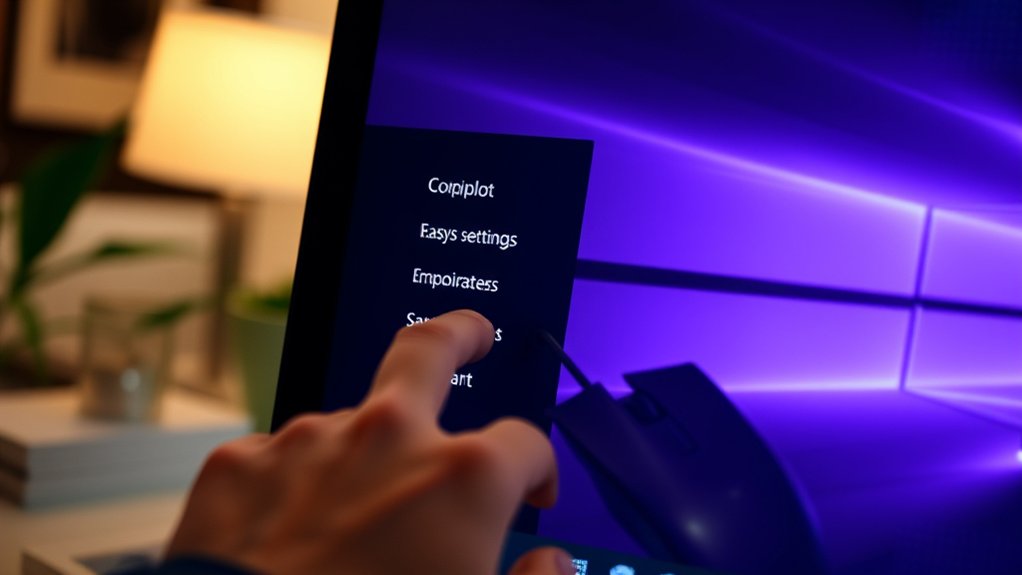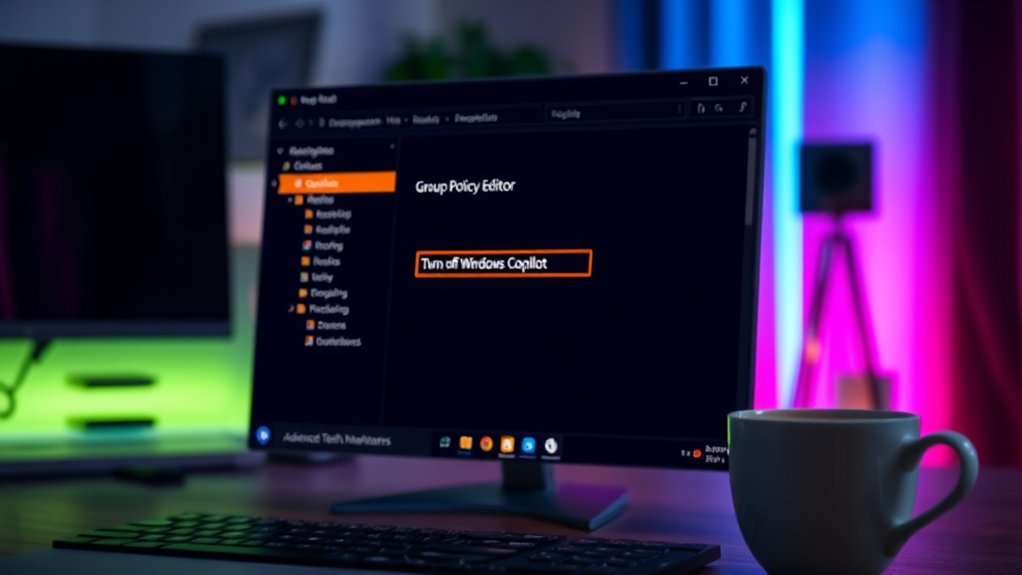To remove Copilot in Windows 11, users can employ multiple methods. Hiding Copilot from the taskbar requires steering to taskbar settings and toggling off the feature. For complete deactivation, users with Windows 11 Pro or higher can utilize the Group Policy Editor to activate the “Turn off Windows Copilot” option. Conversely, Registry Editor allows users to create a DWORD value named “ShowCopilotButton” and set it to 0. Further details on these methods will provide additional insights.

In Windows 11, Copilot serves as an integrated AI assistant designed to improve user productivity through various features, such as summarizing web pages and customizing system settings. Nevertheless, some users perceive it as intrusive and unnecessary, prompting interest in methods to disable or remove Copilot. Those who wish to eliminate Copilot have several options, including hiding the feature from the taskbar or employing more advanced methods like editing the Group Policy or Registry.
In Windows 11, Copilot is an AI assistant aimed at enhancing productivity, yet some users find it intrusive and seek ways to disable it.
To hide Copilot from the taskbar, users can right-click on the taskbar and select “Taskbar settings.” Thereafter, toggling off the Copilot option will remove the button from the taskbar, despite the assistant remaining accessible through keyboard shortcuts. It’s vital to note that this action does not fully uninstall Copilot; it simply conceals the interface, allowing for easy reactivation at any time. Additionally, Co-Pilot integrates with Bing chat to provide enhanced assistance. The cloud-based AI tool aims to enhance user experience and assistance, which may further influence user preferences regarding its use.
For those requiring complete deactivation, the Group Policy Editor offers a more permanent solution, accessible by typing “gpedit.msc” in the Start menu. Users should navigate to User Configuration, then Administrative Templates, and locate the Windows Copilot settings. By enabling the “Turn off Windows Copilot” policy, this action completely disables Copilot for that user, though it is limited to Windows 11 Pro, Enterprise, or Education editions.
Alternatively, users can employ the Registry Editor to create a disable entry. Accessed by typing “regedit” in the Start menu, users will navigate to HKEY_CURRENT_USER\Software\Microsoft\Windows\CurrentVersion\Explorer\Advanced. Creating a “ShowCopilotButton” DWORD value and setting it to 0 will effectively disable Copilot’s functionality. Nevertheless, editing the registry carries risks, prompting the recommendation to create a backup prior to alterations.
Despite these methods, Copilot is characterized as a built-in feature. As a result, if uninstalled, it may simply reinstall upon the next login. The options provided reflect Microsoft’s intention to allow users to tailor their Windows 11 experience effectively, showcasing the delicate balance between integrated features and user preferences.
Frequently Asked Questions
Will Removing Copilot Affect My Windows 11 Performance?
Disabling Copilot in Windows 11 may lead to improved performance, particularly on older devices, owing to reduced resource usage.
Experts indicate that systems may experience slightly increased responsiveness when unnecessary features are removed.
Nonetheless, this adjustment can eliminate access to AI-driven productivity tools, impacting users reliant on such assistance.
Significantly, periodic Windows updates could re-enable Copilot, necessitating ongoing management of system settings to maintain performance improvements.
As a result, user experience may vary.
Can I Reinstall Copilot After Removing It?
Reinstalling Copilot after removal is entirely feasible for Windows 11 users. Individuals can access the Microsoft Store to download the application again.
Moreover, the `winget install` command offers an alternative method for reinstallation. Compatibility with the current Windows version is crucial; therefore, verifying system requirements prior to installation is advisable.
Reinstallation is a straightforward process, providing users with the opportunity to regain access to Copilot’s functionalities without extensive complications.
What Alternative Features Can Replace Copilot in Windows 11?
In Windows 11, alternatives to Copilot include Cortana, Google Assistant, and Alexa.
Cortana, a built-in assistant, manages tasks and offers voice commands, albeit with less AI sophistication.
Google Assistant can be integrated through Chrome but relies on a Google account for full functionality.
Alexa, accessed via third-party applications, provides smart home control.
These alternatives differ in integration and capabilities, highlighting diverse options for users seeking additional assistance tools.
Do I Need Administrative Rights to Remove Copilot?
The need for administrative rights when removing Copilot in Windows 11 varies by method.
Basic uninstallation via Settings or Start Menu typically does not require such rights.
Nevertheless, PowerShell commands, which facilitate broader system changes, usually necessitate admin privileges.
Furthermore, modifications through the registry likewise mandate administrative access.
As a result, users may need to log in as administrators to verify thorough removal across all user accounts, particularly in multi-user environments.
Is Copilot Enabled by Default on All Windows 11 Installations?
Copilot is not uniformly activated by default across all Windows 11 installations.
In particular, it is activated by default in version 23H2, whereas users of version 22H2 find it disabled.
This discrepancy highlights the staggered rollout strategy employed by Microsoft, which aims to introduce features gradually.
Results from recent surveys indicate that over 54% of users have never utilized Copilot, suggesting limited engagement with this feature across varying installations.









